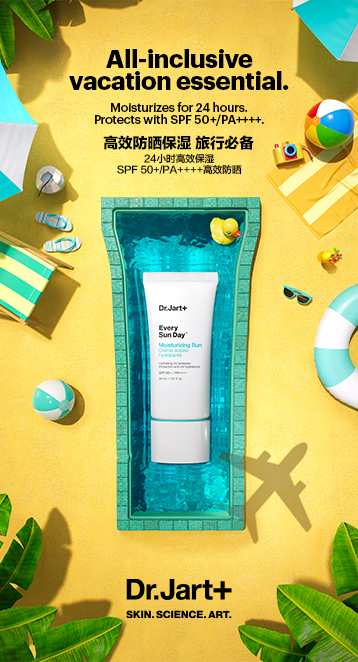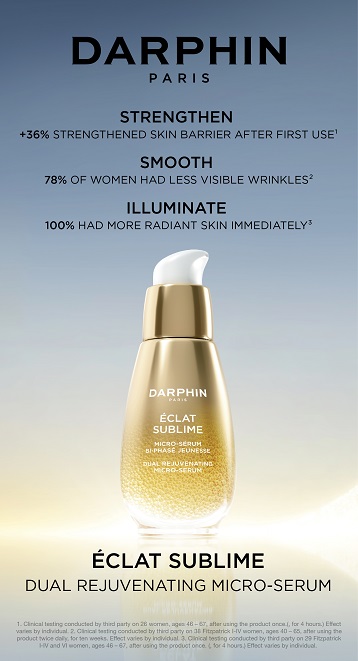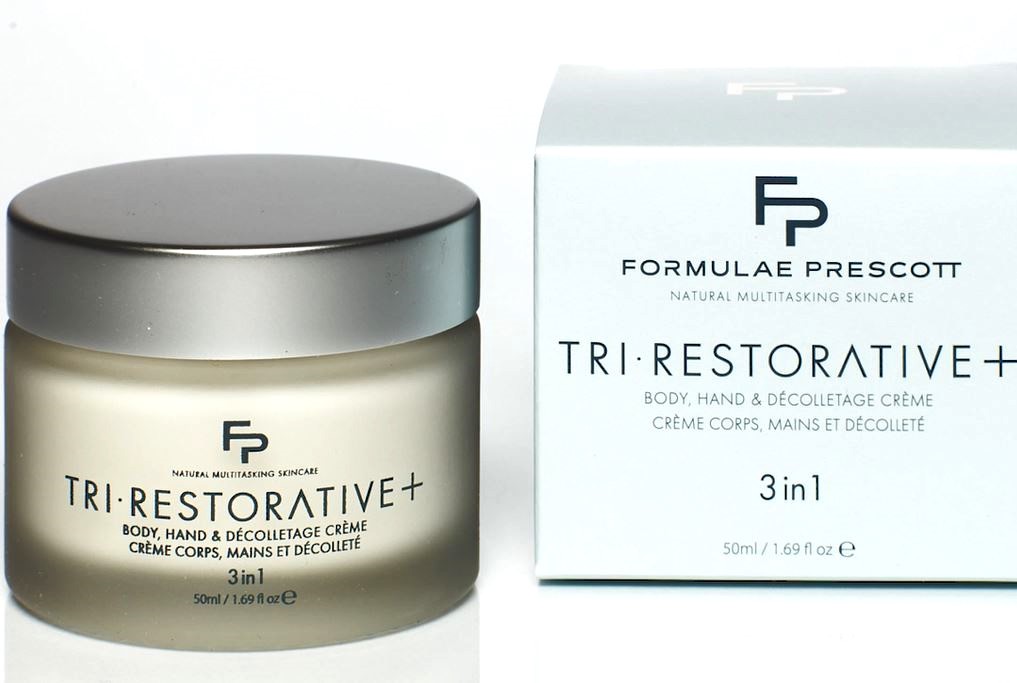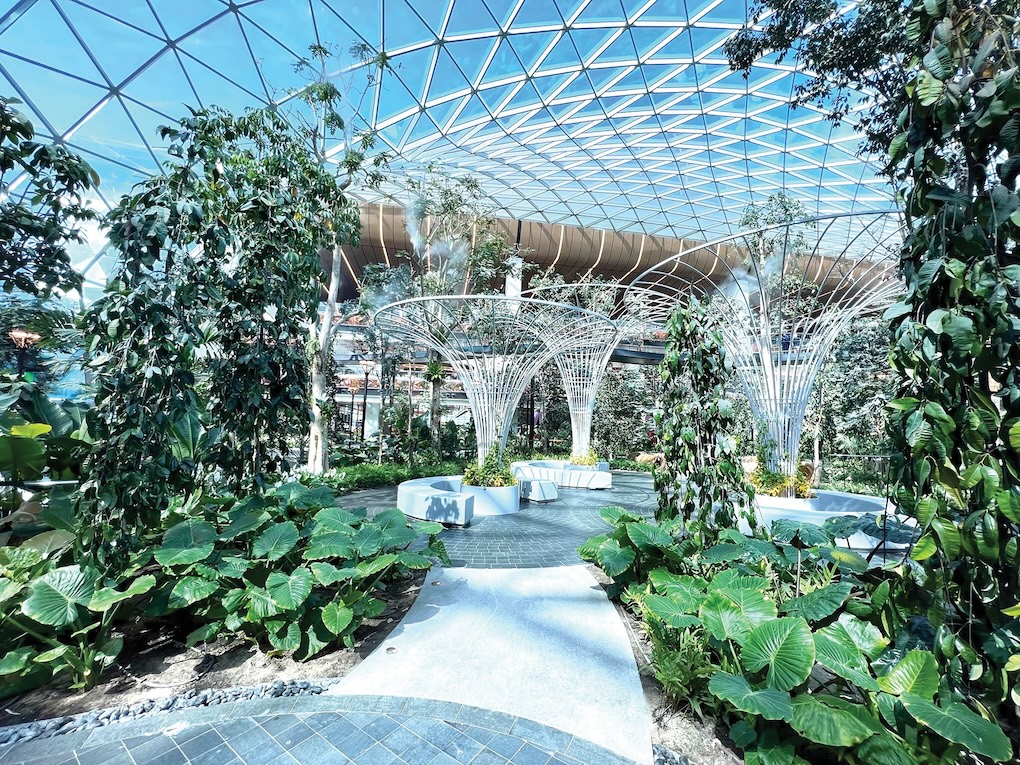
Publisher’s Introduction: As phase one of Shiseido’s grand Vision 2020 plan reaches completion, Martin Moodie met the Japanese beauty house’s CEO Masahiko Uotani recently to discuss progress and to preview phase two.
That, at least, was the blueprint of the planned discussion. In the way of the best conversations however, the subject matter quickly opened up, taking in topics from what the ancient Japanese art of Kyudo can teach a business, to how digital doesn’t just mean Millennial. It also touched on the importance of speaking a common language; the advantages to be gained from diversity; and, above all, the power of listening.
Many is the CEO who could be justifiably accused of being out of touch with what takes place within their workforce – and with their consumer. The Shiseido boss is not one of them. Instead, he has chosen to break down an archly traditional corporate hierarchy, sharing his decision-making power with the beauty consultants on the shop floor (despite what he describes with a smile as the best efforts of his secretaries to keep him contained in splendid isolation).
Rather than take the easy route, Uotani has chosen to shape Shiseido’s destiny with vim, vigour and vision.
Wearing his CEO title with a deliberately light touch, Uotani is dedicated to sharing the power and responsibility of his global beauty powerhouse with those members of the workforce, historically seen as lowly, who crucially hold the key to retail’s holy grail: knowing exactly what the consumers want. Keeping quiet and listening to what his workforce has to say is vital, he believes, in future-proofing Shiseido for the next chapter in an illustrious history. [Interview by Martin Moodie with additional editing by Clare Austin].

Martin Moodie: Uotani-san, it’s been a year since we last talked. Let’s start with an overview of the beauty industry globally, how are things looking from where you stand?
Masahiko Uotani: Industry-wise it is really positive, really increasing in confidence. In 2016, exports of Japanese cosmetic products exceeded imports for the first time. Historically, in the beauty industry, we imported a lot from France and America. In 2016, the figure stood at around US$2.5 billion of exports with imports a little less than that. That means for the first time in many many years that Japanese production of cosmetic products is booming.
[Click on the icon to hear Masahiko Uotani’s take on the role of travel retail to Shiseido]
How are you seeing this sector, the travel retail channel channel? You earmarked it as a global priority when we spoke last year during your first visit to the Cannes show. How far down that road are you?
In the three or so years I have been at Shiseido, probably the best decision I’ve made is to put more investment and focus into the travel retail business. It’s a decision I’m so proud of. I can’t take the credit though! My colleagues convinced me that there was a great opportunity in the travel retail sector that, in the past, we were kind of missing out on. They got me to realise that. I listened to what they were telling me and we started to improve things.
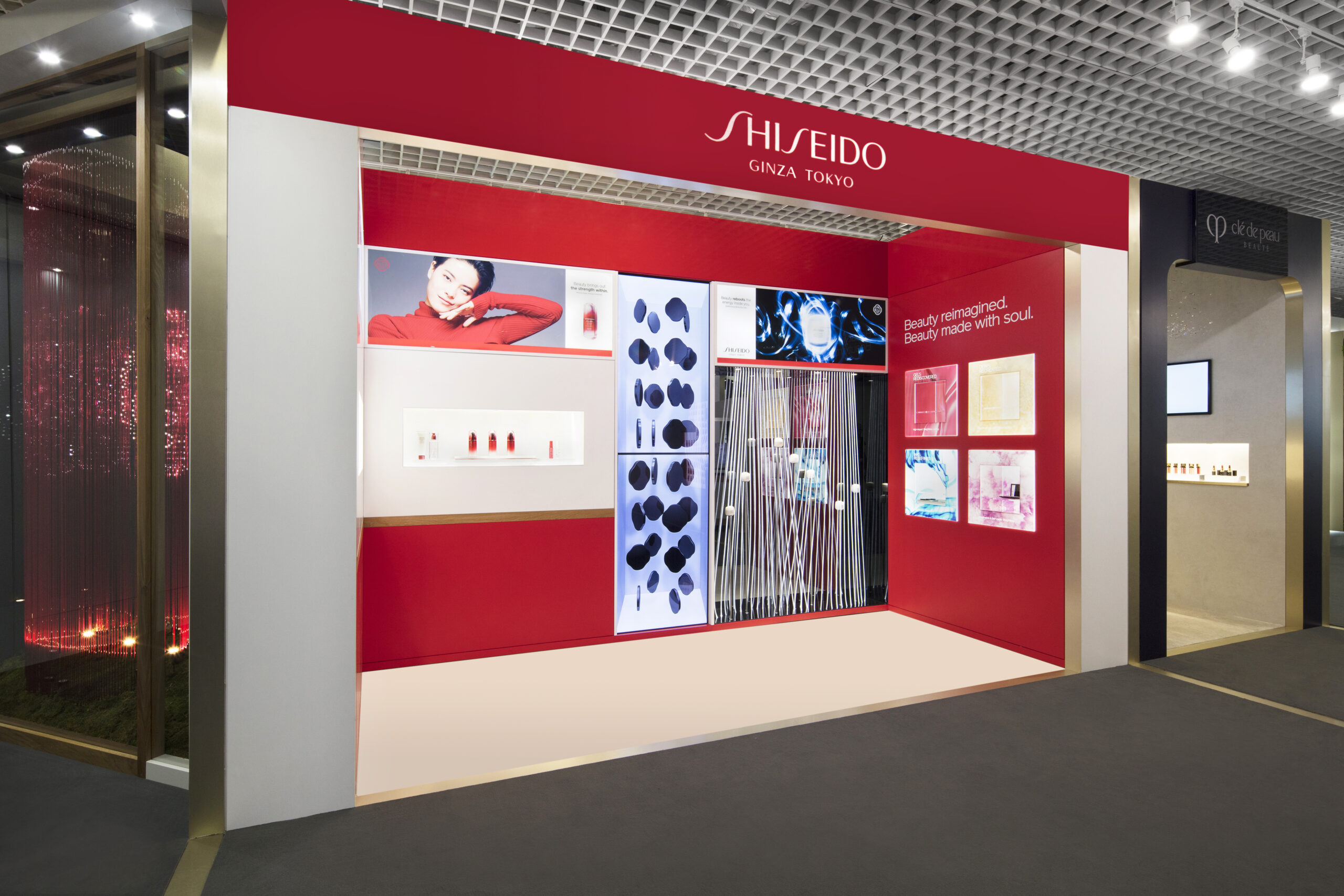


I’m very, very happy with the progress we’re making. At the same time, I have to say we haven’t reached our goal yet. We started from a low market share when the team assembled a new global travel retail organisation but within the first six months we had record sales and record operating profit and the momentum is continuing. In terms of expertise, we have attracted a lot of talented people to come and work with us.
Travel retail is a showcase for us so I’m always using travel retail as an example when I talk to other regions: “Look at them. They are working hard, they are showing us we can do it” and it has motivated the whole company. So I’m happy but we must keep it going.
That showcase role is very important for you, isn’t it? It’s obviously an important volume and value channel in its own right but it’s also playing a wider role for the group. All those domestic customers flying around the world, seeing Shiseido, hopefully, at your best. That has to have a big knock-on effect on your domestic markets?
Yes, I agree. Our domestic business was kind of flat-lining for five or six years in the past. Now, with the new management in place, I am involved as Chairman of the domestic company and together we are working so hard and listening to our people on the front line: the beauty consultants.
“I wanted to talk to the people who work directly with our customers because I really respect what they do to build relationships and create connections”
For example, in January this year [2017], we started a conference series for regional management and employees of the domestic business. Over eight conferences I was able to talk to 5,000 people, including 2,000 beauty consultants who work in our stores. This was something that never happened in the past. I wanted to talk to the people who work directly with our customers because I really respect what they do to build relationships and create connections.
The conferences took place over two-and-a-half months. It was physically tiring and consumed a lot of energy. But I knew it was worth it.
At each conference, I did a presentation which focused on what’s going on in the world. Even though it’s a domestic business, I told them: “You are part of the global business. We’ve got travel retail. We’re in China and America. We’re all working together as one group.” Some of the beauty consultants were moved to tears, saying: “This is the first time I really feel a part of our big business”.
At the same time, I emphasised the fact that Shiseido is a Japanese company originally and we must honour that heritage.
This has worked well and our pure domestic business is also growing now. On top of that, we have a lot of tourists, mainly Chinese travellers, coming in to Japan and our Japanese business is enjoying double-digit growth. There is a great synergy between what I call these triangle touch-points.

Triangle touch-points? How do you mean?
Obviously we have a strong, and growing, presence in Japan in the prestige business. Then in China, we have been there for 30 years, and that prestige business is really growing too. We are making big progress in terms of market share.
And then, travel retail: When people travel from China, from Japan, to other Asian countries, to America, to Canada (a lot of Asian consumers are now travelling to Canada), what they see and hear about our brands should be consistent with what they see at the airports when they come to Japan.
The key is having a cross-border marketing team, sharing the information, sharing the marketing plans, such as what kind of products to focus on, what kind of advertising or communication you are going to be having with consumers, what type of promotions you are running etc. It is vital to have consistency across the board.
I found, interestingly, that almost 80% of Chinese tourists coming to Japan buy cosmetics products. That’s 80% buying products from Shiseido and our competitors. These consumers are stimulated by the airport retail offering and then, when they return home, nearly 50% of those people repeat buy from the same brand.
So, travel retail as a recruitment tool is critical for you?
Yes, particularly in the airport terminal, in the duty free shops in the airports. Here consumers are not doing their usual day-to-day kind of shopping. The occasion of setting off on your travels and the emotions that travel shopping inspires create a special moment. The customers are enjoying shopping, looking around, buying gifts for their friends and families.
Having the three points connected – the China organisation, the Japan organisation and travel retail – means we can build on those sales. It’s not a case of Japan saying: “Oh no! I’m losing my business to China”. No. We are creating synergies.
You touch on a key point. Historically, with many companies – not just in beauty – there have been internal tensions as to how travel retail should be run. Should you have a central travel retail division, for example, or run it out of each domestic region? With Shiseido you seem to have resolved that pretty satisfactorily from both sides.
It’s working very well. Our global travel retail team now works very closely with their domestic market counterparts. For example, the travel retail team are very close to the China team as China is critical to the travel retail business. Equally, the team in China see the benefits of travel retail as a successful recruiter for the brand. We have seen a lot of repeat business from travel retail into the domestic market.
To facilitate this mutually beneficial way of working, I created a cross-border marketing team, reporting to me in Tokyo. It consists of people in Japan, Taiwan, China, India – a cosmopolitan team. They make sure that all our organisations are working together, coordinating via the three triangle touch-points. So, I’m hoping that this will result in more aggressively consistent advertising and a common marketing programme when we launch a new product and also around specific events such as Chinese New Year.
“I have realised that the touch-point with your consumer is the most important thing in a business like ours”

I am particularly interested in your story about the beauty consultants. Although they are right on the front line, their voices are often not heard in a big organisations. Certainly not at the top. How did you structure their involvement? And did their feedback throw up any big surprises?
It was very interesting. First of all, over the course of my career, I have realised that the touch-point with your consumer is the most important thing in a business like ours. If you shut yourself away in your presidential office at the top of the building, you are never going to understand what’s going on with the consumers, right? So, I try to remember this and to get out of my own little world. Although my secretaries try to keep me busy in the office with meetings, meetings, meetings!
In the last three or four years, I have probably met 60,000 employees. And we only have 48,000. So, some of them I’ve met several times!
“I ask them to be very open and honest, to give their own opinions – even if it points out a problem that I have created, they must feel able to tell me”
Each time, I try to listen to them. There are so many things to know and to understand. In the conferences I mentioned earlier, we met 5,000 employees in eight locations and around 40% were beauty consultants. Each time I presented for a good 30 minutes on what is going on in the world, and how we are now part of that as a global company. I told them: you are part of that, you should be proud of it.
Then, I turn it over to them, I go and sit with them and we put around ten employees up on the stage. I ask them to be very open and honest, to give their own opinions – even if it points out a problem that I have created, they must feel able to tell me. Each time I said: “I want to make this risk free for you. So I told all the supervisors you can’t blame them, even if we hear something really negative for you, there will be no fall-out. It is risk-free, so don’t worry, speak freely”.
Usually, because of our polite and reserved Japanese culture, everyone is quiet at the beginning.
I imagine they would be very reserved, even wary.
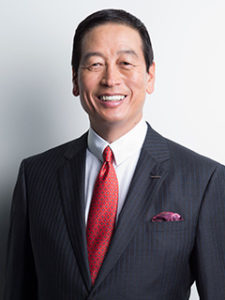
Yes. So, I pushed a little stronger, telling them: “You’ve got to tell us what your experiences are, because you are the people who understand our customers very well”. They started raising their hands and making points and suggestions such as: “We want to have better designs” or “We need better advertising and merchandising” or “Our competitor was running a very successful promotion in my region and I felt we should be offering something similar.”
We really tried to give them a quick decision: yes, no. It’s no good to just sit back and say: “Thank you very much for your great input. I’ve listened to you and I will get back to you later.” That doesn’t work.
In most cases, I said: “Okay, you want to run a specific promotion or you need merchandising? Okay, we’re going to get it for you tomorrow. Just do it.”
When I ask my employees, particularly those working on the front line, to make a commitment to doing a good job with the consumers and with growing the business, I have to make a commitment to them as well. I can’t simply say: “Employees, you work hard, I’m just going to sit back and watch.” No. My commitment is to give them feedback as quickly as possible.
Some very interesting ideas came up. Two sales guys who work alongside the beauty consultants were on the stage at one point. They explained that some customers can feel intimidated by the beauty consultant uniform. In an attempt to make them more approachable, they had tested the idea of getting the beauty consultants to wear their day-to-day clothes and the kind of make-up and nails and hair that they would wear on a ‘normal’ day. The customer feedback was great. The customers reported that they felt much more comfortable around the beauty consultants.
I said “What a good idea. I don’t think we can do that everyday yet but why don’t you test it once a month to start with?” I was with the head of the beauty consultants and she said: “We are going to dismantle all of the regulations we have built over the last 34 years. We are going to start again from scratch.”
That’s pretty bold!
Yes, but you know, we are often constrained by rules, rules, rules. The rules are distracting people from being able to think freely of new ways to improve the Shiseido experience for the consumer.
We went around to the eight conferences and we had so many examples like that, where we were able to give people an instant decision. It threw up some very difficult discussions that we needed to solve quickly. We had 40 actions to follow up!
We appointed one person specifically to follow up all of those 40 actions, to make sure they were being followed through. It’s been six months now and each of them is getting solved.
Since the conferences, I have found that the beauty consultants are becoming more serious, more motivated.
Well, I’m sure that they feel part of something, that they are being listened to.
Yes, exactly and, as a result, they have become more proactive.
Another example that I am very proud of: One beauty consultant stood on the stage and said: “We are now putting the focus on prestige in travel retail and it is doing very well but I don’t think we are there yet. We have to do more in terms of luxurious branding and packaging and merchandising. We need to be beating other global luxury brands so, we have to work harder.”
I knew this was a good point, so I organised a meeting with our creative designers and I said to the beauty consultant: “You talk to them. What are the kind of emotions we want to create for our prestige business?” She made a presentation to the creative design team and they really listened. Now, next year you are going to have new kinds of product lines coming up as a direct result of that meeting.
In the beauty sector, it strikes me that you have an army of people out there who have a uniquely personal relationship with the consumer. There’s a real power in the one-to-one conversations that happen at the counter. A real reservoir of knowledge and findings and learnings amongst the beauty consultants.
Exactly, and I have found that the key is to react very quickly, proactively and positively. Obviously, the last thing we are going to say to them is: “Oh that’s a very lavish idea” or “That’s a very small idea. It won’t make a big difference.” Even if it is a small idea, I’m going to say: “Thank you. It’s a great idea and we will make it happen.” We will listen to every single idea.

We talked a lot about Vision 2020 last time we met. As you move into the second phase of Vision 2020, can you give us an overview of how the first phase has gone?
From the beginning, I made Vision 2020 a six-year journey of two phases. The first one being 2015-2017 which focused on rebuilding the foundation of our business. The second phase, which will start from 2018, will concentrate on building a new business growth model.
With the first phase, we reviewed all the businesses and changed our business from a vicious circle to a positive cycle. We invested in marketing, organisation and people so that we could deliver a better product and experience to our consumers. Then, as a result we can sell more. You don’t get the results overnight. We have had to be patient, waiting and working hard before we started to see an improvement in our P&L again. The first phase has taken us three years and now we see it all happening.
What’s important for me is that we nurture our people, promoting people internally and putting more money and resource investments into marketing and merchandising. Our sales are really growing. The first three years are going better than I had originally hoped for but you have to be careful. When you plan a supply capacity, like production and logistics, you make a projection of sales and forecasting.
So, five years ago, even three years ago, the forecast wasn’t as aggressive as it is today, it was treated as more of a low-key business. But in the last three years, we realised this business has huge potential, so let’s go for it.
As a result, the capacity we planned five years ago is not enough. I have had to re-forecast for the next five years, working on dramatically increasing our capacities. I don’t want to miss the opportunity anymore.
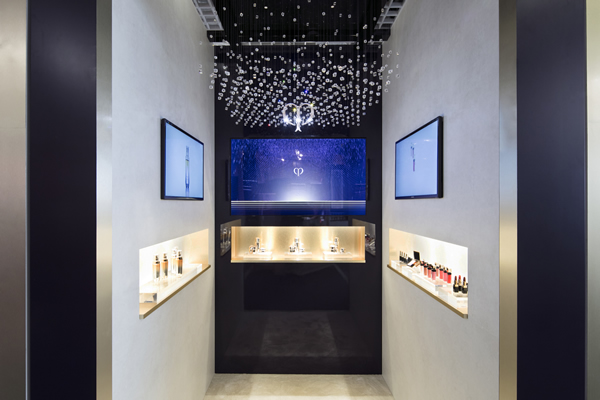
In terms of the supply chain, how easy or complex is it to manage, how quickly can you turn things around?
I changed things by getting the organisation to report to me. I’m on it. Quite often, supply chain areas are huge investments. Like now, we are building a new plant in Osaka which requires over US$400 million of investment. I fully support the organisation and all the plans they are coming up with so that we can keep pace. The good thing is, it doesn’t take us ten or 20 years to catch up. It’s not like we are a Scotch whisky company requiring a long ageing of products!
What else can we expect from the second phase of Vision 2020?
As I said, the upcoming second phase is going to concentrate on building a new business model. In fact, we have started already with the Dolce & Gabbana licensing agreement. Originally, I didn’t plan to acquire any brands or licensing until 2018 but because the opportunity arose, in 2016, we decided to act on it.
In 2018-2020 we are looking to accelerate consumer retail and prestige brands along with our digital approach. That is already being worked on very proactively. Thousands of our employees have already gone through our Digital Academy so digital is becoming part of our life now.
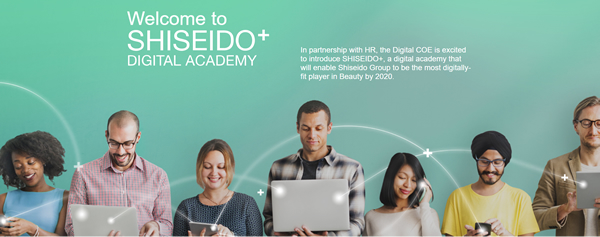
Talking of digital, you have spoken about becoming the most digitally exciting company in the world. Again, how far down that road are you?
From the beginning our goal was to digitalise the company by 2020. To get there we really had to start working on it straight away, so we created the Digital Centre of Excellence in New York, recruited our Chief Digital Officer Alessio Rossi who then developed his team, recruiting people mainly from digital companies in the US.
This team support us all through training, putting together a global strategy, helping us all to understand e-commerce and giving us a new way of thinking about the CRM database. All that will come to fruition in the next three years.
One of the fastest-growing travel demographics is the over 60s. In our industry there is so much focus on millennials and younger consumers but at Shiseido you have historically had a very loyal, huge, more mature base as well. With your move into digital and your focus on addressing the millennial market, is there a tension between that approach and your traditional consumer?
For Shiseido, I think our strength, as you say, is our very strong and loyal customer base. Our issue has been that we can maintain a strong base of existing customers but we were not aggressively recruiting new users. This is true in Japan, as well as in other countries.
In terms of digital, even in the 60-plus age group, there are people who happily accept that life is becoming digital. Through their use of smartphones for example. So even for that age group of people, we should be improving the digital uploads, getting the information to them, building on our relationships with them. Some of them are happy to work with e-commerce as well.
Therefore, we shouldn’t underestimate the penetration of digital life within this age group. So, yes, our lives are really changing because of digital communication but that is true for everyone, not just millennials.
“We should be providing a digital entry point, which tells them what we do. But we also want people to physically come to the stores when they have the time or the desire to do so. We want to give them real, human service.”
The Moodie Davitt Report holds an annual event, The Trinity Forum, to bring airports, retailers and brands together, trying to foster a mutually beneficial relationship, as opposed to their traditionally adversarial one. The theme this year was: ‘How does airport retail remain relevant in a world that’s changing?’.
You could apply that question to your department stores, to standalone stores and equally to travel retail. How does traditional bricks and mortar hold up in the face of more change in the last 15 years than we’ve seen, say, in communication in the last 200? How does it remain relevant?
The other day I was interviewed by the Japan Department Stores Association and they asked me the exact same question: Do you think department stores are in decline? What should they be doing?
My response to them was: You have to be really crystal clear on where your strength lies. When I talk about digital, I don’t mean everybody is now moving away from face-to-face relationships. Particularly in terms of prestige business, you need to mix it. Obviously, using digital devices, people can see the stories in moving and beautiful ways but that doesn’t mean that they don’t like to talk to real people.
“It is so important to respect each other and our different ideas and different languages. That is why I announced that we will make English the language of our Japanese headquarters from 1 October 2018.”
We should be providing a digital entry point, which tells them what we do. But we also want people to physically come to the stores when they have the time or the desire to do so. We want to give them real, human service, particularly in the case of Shiseido which we define as an ‘at your service’ brand.
In Japan, we have almost 8,000 beauty consultants. Three years ago we were employing 1,600 contractor beauty consultants until I decided to offer them all full-time jobs. We asked them to become employees because we want them to have a stronger motivation and higher skills in talking to people.
In order for us to differentiate, this sort of human approach is more important than ever.
I read an article in the Nikkei Asian Review that said while the number of travellers to Japan has grown, buying trends are changing. There is now more of a thirst for experience over just buying a product. It strikes me that travel retail, all traditional retail, in fact, has things that even Alibaba Founder Jack Ma with his brilliant mind cannot replicate online. Particularly with beauty products, in terms of the human experience, the touch, the fragrance, the intimacy of that relationship between beauty consultant and customer. If you can maximise that, you are always going to have a business.
Exactly. I think this is the difference with the business I was in previously (Mr Uotani was formerly President and Chairman of Coca-Cola Japan). Selling a beverage for US$2 and marketing high-prestige brands where emotions play a large part is completely different. Particularly for Shiseido, you have an emotional side of the service that is so important and I define it as one of the building blocks of the Shiseido DNA, the Shiseido heritage.
Talking of heritage: You are the great moderniser but you also embrace that heritage with a passion. Tell us about how you manage that balance.
I came up with the five DNA strands of Shiseido: One is the Japanese aesthetic. That is a critical point which differentiates us from others.
The second thing is technology and science: Whatever we do at Shiseido, it is always grounded in science. When we came up with Ultimune, a product that works to protect skin’s immunity, we ran a major scientific and clinical study with Harvard University Medical School. We spent many years and a lot of money on research into how the immune system works, particularly in relation to the skin. You can just come up with a product but our way is to root any innovations firmly in science and technology.
The third one is art and design. Attention to detail through the best of Japanese art and design is another very important base for us. Customers love to see and touch beautiful packaging.
Number four is that we are multinational. If you take a look at the definition of multinationality in a Japanese-English dictionary, it translates to hospitality. I think it’s more a concept of putting yourself in another person’s shoes, which is a very Western way of building a relationship. To think about what they are thinking, to anticipate their needs so that we can surprise them, deliver satisfaction and give them something better than they were expecting.

Number five: We are human-centric in terms of our corporate culture. We put the focus on our people in the first instance and then base our culture on fundamental Japanese values.
I have a story to illustrate this. During my presentation at our global conference in January, I invited a Frenchman to speak: the President of Godiva Chocolate in Japan, Jerome Chouchan, who has been living in Japan for 25 years. He is a black belt in traditional Japanese Kyudo archery. He said: “Don’t underestimate the great value of Japanese culture. Take Kyudo (the Japanese martial art of archery). It is very different from Western archery. First of all, the bow is made out of one type of bamboo using great art and craftsmanship. Then, although you really want to hit the target 28 metres away, it’s not just about hitting the target, you also score points for style and form. It is all about the style and the form, the performance as a whole even down to the way you stand back after hitting the target.


Everything is a part of your performance. Jerome’s point was that in Japanese culture, if you have the right form, the right style, then as a result you will hit the target. In Western culture, particularly in the US, it’s more ‘just hit the target’. That kind of aggressiveness is important but you also want sustainability. You don’t want to ‘just hit the target’ once and then the next time you miss it.
I really respect this concept. In terms of applying it to Shiseido, it’s about developing the capabilities of people, their talents and skills. That’s the first priority. Once you do that, you don’t have to worry about the result. The results will come.
“Particularly in Japan, women have been underestimated. I made a commitment to seeing 30% of our managers as women and we did it. Now I have set a new target for 2020 to get a 40% female workforce within the domestic Japanese organisation, which is globally the toughest nut to crack. Diversity makes us stronger, gives us a different kind of power.”
Along with our employees and our Japanese culture, the third factor in being human-centric is growth and diversity. We are running a global business and I really want to see leverage in terms of different sorts of people. We now employ 66 nationalities, younger people, older people, men and women. You know, particularly in Japan, women have been kind of underestimated. I made a commitment to seeing 30% of our managers as women and we did it. Now I have set a new target for 2020 to get a 40% female workforce within the domestic Japanese organisation, which is globally the toughest nut to crack.
Diversity makes us stronger, gives us a different kind of power.
It is so important to respect each other and our different ideas and different languages. That is why I announced that we will make English the language of our Japanese headquarters from 1 October 2018. English will become our common language.
I have told everyone, “Don’t worry, you don’t have to speak it like a native” but I explained that the globalisation of our business should be driven by common communication. If you have a translator in between, you can’t really communicate what you really want with the people who don’t speak Japanese.
That makes a very powerful statement.
Yes. We introduced this programme into our headquarters in Tokyo first and our employees there are currently going through their initial assessment. Two thousand employees took that test. Then I introduced a supporting programme for those people who really want to learn English. I told them I will support all of them in terms of fees. 1,700 people signed up to learn. I’m so excited!
Engagement, experience and emotion as travel shopping drivers “In today’s world, the path to purchasing a product is no longer linear and led by brands. Consumers are now in the driver’s seat when it comes to deciding who or what influences their buying decisions, where and when they shop, as well as how they interact with media.” – Shiseido Travel Retail President Philippe Lesné on how airport retail can remain relevant.
Maintaining that relevance is the basis of Shiseido’s consumer-oriented transformation under the Vision 2020 corporate strategy, Lesne says. “How are we doing this in Shiseido Travel Retail? By using consumer data and insights to create tailored marketing campaigns and content. Our digital activations are designed to generate leads, increase awareness and drive engagement at every touch-point of the traveller journey. “Insights and data collected at these digital touch-points help us in our consumer analytics, which in turn allow us to create more relevant and personalised marketing campaigns and target consumers more effectively.”
Digitalisation and humanisation converge But digital should not exist in isolation, he says. A personalised consumer experience, supported by other important non-digital elements such as customer service, retail design and product value, help create a positive perception of airport retail and engender consumer loyalty. “The aim is to create an omnichannel framework that seamlessly integrates the online and offline TR shopping experience,” he says. Key to Shiseido’s strategy is enhancing collaboration with travel retailers by partnering their CRM programmes and leveraging their digital and social media platforms. “Retailer partnerships are crucial to the success of our travel retail marketing initiatives, and we have been working to close the gap vis-à-vis our competitors with a comprehensive go-to market strategy to strengthen our relationship with our retail partners in digital,” Lesne comments. “Besides strengthening that all-important link between online and physical retail, we must also focus on and continuously improve on what distinguishes travel retail from the online channel, so that travellers are incentivised to shop in-store.” Key elements of that approach include “traffic-stopping” animations, inspiring counter designs and world-class retail environments. Those must be backed up by top-notch customer service, the assurance of product authenticity, and one-of-a-kind gifting options from Shiseido’s collection of travel retail-exclusive value sets, Lesne explains. “These are all assets of travel retail that other channels will find hard to rival. “Shiseido Travel Retail’s strength lies in our ability to deliver an authentic brand experience for consumers through retailtainment. We, as well as the travel retail industry, must continue to emphasise these and raise the bar higher.” Experience vs. product and how ‘emotionalising the buying process’ is key One of Shiseido’s key strategies is to “emotionalise” the shopper’s buying process by incorporating Sense of Place campaigns. This is done by recreating destination-specific experiences within the travel retail environment. A prime example was ‘The Beauty of Thailand’ campaign with King Power International, which was tailored exclusively for travel retail. “This was a milestone project that was conceived based on our consumer data and insights that revealed Thailand as the number-one destination choice for Chinese travellers, hence the choice of Bangkok for this campaign,” Lesne comments.  “This desire for cultural and lifestyle experiences is very strong among Chinese millennials, so we brought together a Thai artist (Riety) and an influential Chinese fashion and lifestyle blogger (Magic Yang) and created a promotional video (see below) filmed in Bangkok.” Riety even created Thai-inspired artworks for a travel retail exclusive set that was developed exclusively for King Power Thailand. “Product focus was secondary; in fact, it took a backseat to the overall brand experience. There was subtle product placement in the promotional film, which focused more on the Bangkok trip and products were featured in the context of Magic’s video tutorials and product demonstrations. POS activations focused strongly on consumer experience as well.” The campaign was such a hit that Shiseido relaunched it from September to November, expanding the animation with two additional locations: downtown Bangkok and Don Mueang Airport and more interactive elements. It’s a good example of how to leverage brand experiences to drive purchases, Lesne notes. From sense of place to sense of touch: Introducing the new Shiseido Essential Energy range Expanding on the notion of ‘experience’ in terms of product, the Shiseido brand has also moved beyond focusing only on the results of usage. Now, it also considers the more tactile aspects of the product experience with the new Essential Energy range. This features ReNeura Technology to “reboot” the skin’s network of sensors and sharpens the ability to detect and repair visible and even subtle signs of ageing.  Its packaging is inspired by the handcrafted tea bowls used in Japanese tea ceremonies, and is especially designed to appeal to the sense of touch and fit naturally into the user’s hands. It comes in 64 unique shapes and different graphic designs to treat the senses to new visual and tactile experiences. |


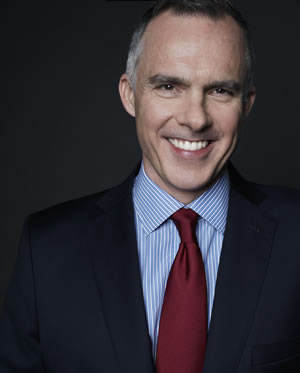 “In this context, the key to staying relevant is to keep pace with consumers, developing an in-depth understanding of them and their purchasing habits, anticipating their needs,” says Lesne, appointed Vice President Travel Retail Worldwide on 14 July 2014 and later promoted to President of a
“In this context, the key to staying relevant is to keep pace with consumers, developing an in-depth understanding of them and their purchasing habits, anticipating their needs,” says Lesne, appointed Vice President Travel Retail Worldwide on 14 July 2014 and later promoted to President of a 